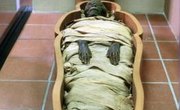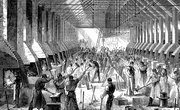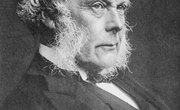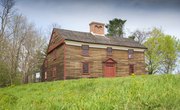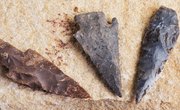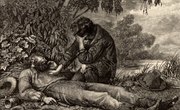Life in colonial America was very dangerous. Doctors of the time were nothing like the medical professionals of today. Common illnesses and minor injuries could mean death from improper care and treatment. Medical care in colonial times was a very primitive area with lots of room for advancement.
History
In colonial times, everyday life was very different. Homes did not have bathrooms or running water. Instead, chamber pots served as toilets, the contents of which would be poured outside. Bathing was a rare occurrence, as most people believed that a coating of dirt was necessary to protect the body from illness. Drinking water was often contaminated by the waste from both animals and humans. Doctors would train apprentices who needed no formal certification or proof of their education to later call themselves a doctor. Hospitals, colleges and medical societies didn’t begin to change the medical world until 1721.
Function
In colonial times, the majority of illnesses were treated at home without the help of a doctor. Health care responsibilities would fall to the housekeeper, plantation mistress or mother in the household. A supply of medicinal herbs and perhaps a journal of remedies was kept in the home. When home remedies failed, the local barber was often the next stop. Barbers would often bleed patients or remove abscessed teeth. Another important medical professional at that time was the apothecary, who made and administered various medicines and often performed all the same duties as a doctor. For any needs related to childbirth, a midwife was called upon. The assistance of a doctor was usually saved as a last resort for extremely ill patients.
Features
Very few medical advances had been made by colonial times. Medicines were made from herbs, roots, tree bark, plants and occasionally even animal parts. Bleeding a patient was a common practice and was believed to remove harmful toxins from the body. Aches and pains were treated with a hot poultice, and a cold cloth was one of the best remedies available for a fever. Headaches could be treated by smoking cottonweed boiled in lye in a pipe, or with vinegar of roses. Other remedies proved more effective and are still used in medications today. Calamine was used for skin irritation, and chalk was used for heartburn.
Identification
The average life expectancy in colonial times was a mere 25 years. Common diseases of the time were small pox, pneumonia, scarlet fever, cholera, tuberculosis, malaria and influenza. These caused many deaths, especially among children. Injuries could be deadly as well. Infection could set in easily and turn to gangrene. Early colonists were often fascinated with the treatments used by Native Americans. Common household remedies included honey, wine, flowers, berries and licorice.
Effects
Early colonial medical treatments were very primitive and often had effects that were the opposite of their intentions. To begin with, treatment from a physician was too expensive for most people to afford. Self-diagnoses and treatment often failed. Some colonists would forgo treatment altogether, believing that sicknesses were punishments from God. Even when a physician's services were sought, the result was not often favorable. A general lack of knowledge prevented successful treatments. Some practices, such as bleeding a patient, would actually cause more harm than good, and ineffective painkillers could make such treatments excruciating.
Related Articles
Writer Bio
Mandi Rogier is a freelance writer who enjoys writing about a wide range of topics. As a previous employee of Walt Disney World, she enjoys writing travel articles that make use of her extensive knowledge of Orlando theme parks.


